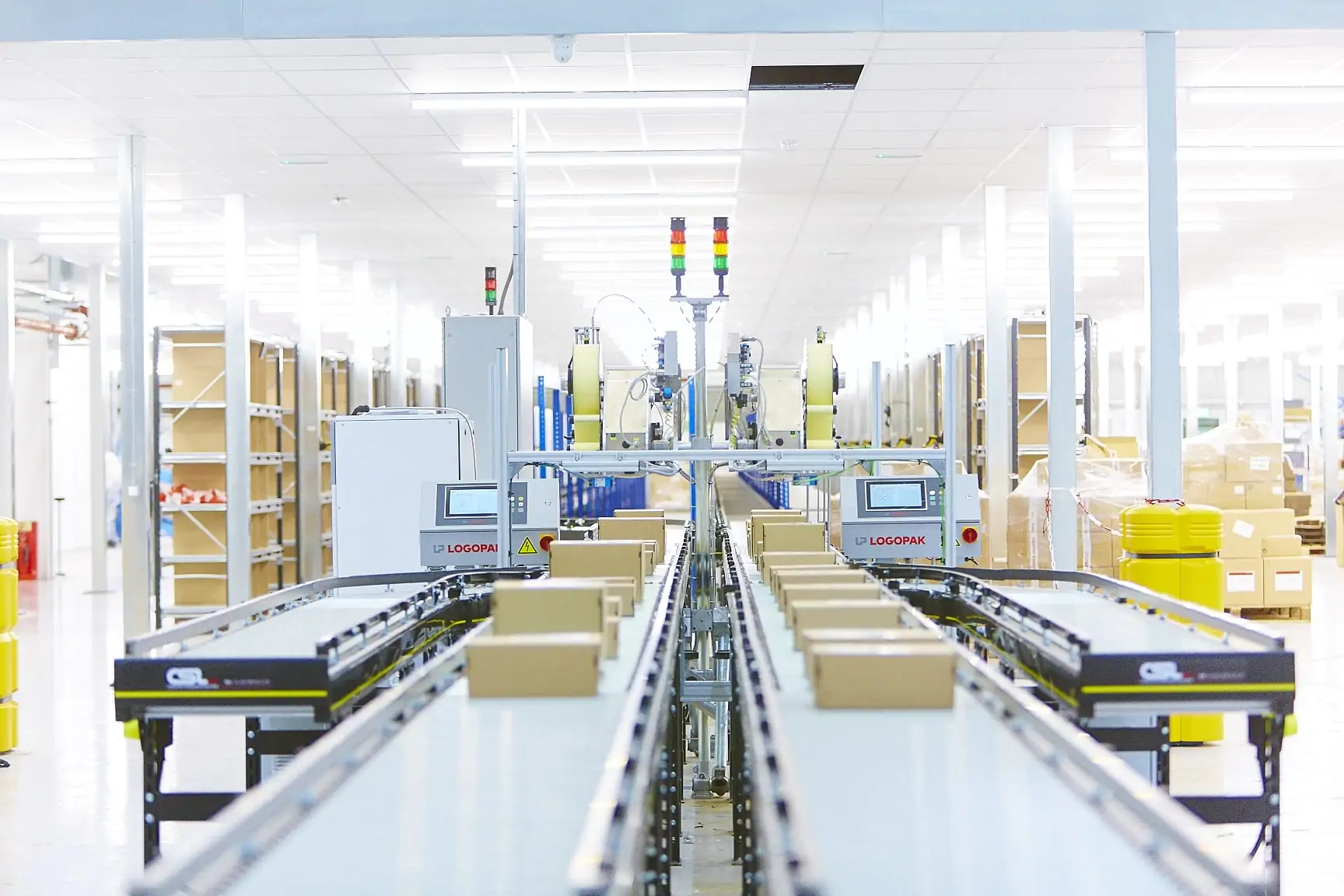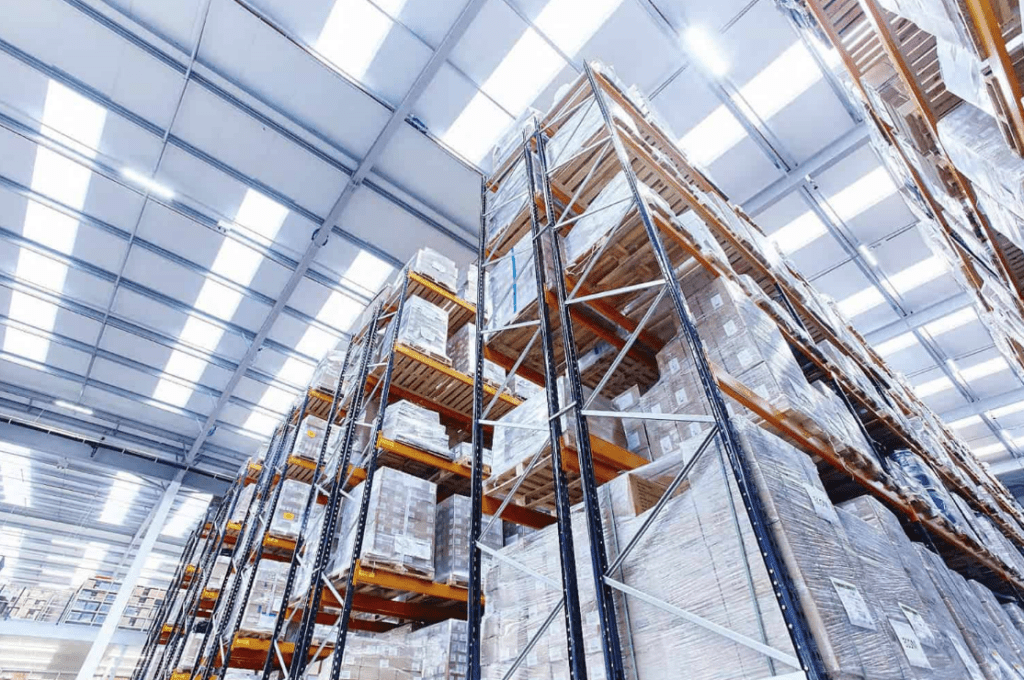
Let’s get one thing straight: despite what you might read in other blogs, the tech revolution is not bringing about “the biggest transformation we’ve ever seen” in the logistics industry”, nor are we witnessing “an unprecedented pace of change” – Tom Ashley, Chief Operations Officer, ILG
The train, plane, combustion engine, electricity, telephone… all these innovations brought about much bigger and more rapid leaps forward for logistics than new technology is doing, or will ever do. But, as in sport, the days of breaking the big barriers are gone; it’s the fractional improvements that give competitive advantage today.
In this article, we’ll go through the main ways tech is impacting the fulfilment and delivery industry, including:
- Shaving seconds off order processing
- Streamlining the pick and pack process
- Automating last-mile deliveries with real-time tracking systems
- Anticipatory shipping – using data to anticipate demand
- Using Blockchain to avoid supplier disputes
5 ways in which new logistics technology provides fractional improvements & efficiencies:
- Shaving seconds off order processing
How late can your customers place their orders for next day delivery? Every second it takes for an order to come through to the warehouse is a second lost.
Client integration systems like Fusion, which we use at ILG, connect to the client website and share order information in real-time. So when a customer places an order, we see it within seconds. This gives us more time to pick and pack the order, which means clients can push order cut-off times later and later.
That’s a major selling point, as is the ability to show customers the progress of their order and tracking information in real-time.
- Streamlining the pick and pack process
The biggest cost in a warehouse is the time people spend walking around. Innovations like Pick-to-Light have sped up the picking process. Orders can be batch picked in large quantities and then sorted through a lighted put wall into individual customer orders. The key benefit of this will be the increased flexibility it gives logistics partners to respond to spikes in demand without having to hire in auxiliary staff; for example, on Black Friday, when we might have 10,000 items to pick and pack for one client alone.
Robotic pick and pack systems
But there is a significant opportunity for time-saving by using robots to bring items to the packing station, thus saving those wasted walking hours. While full automation in the warehouse is not currently viable, developments in robotic systems is leading us to a situation where we can implement semi-automation, or so-called ‘cobots’, working with warehouse staff to streamline the pick and pack process.
Hot-spotting and task grouping
Further efficiencies in the warehouse will be achieved through ‘hotspotting’ – using smart relocation to place the most popular products closest to the packing zone – and interleaving tasks so that staff can be organised to carry out more than one task per visit to any given area of the warehouse.
- Automating last mile deliveries with real-time tracking systems
There’s a lot of talk about autonomous vehicles but realistically it’s going to take decades to integrate driverless cars and lorries into the current road transport system. Where automation is already making a difference is in last-mile deliveries.
The last-mile delivery challenge has always been a sticking point for carriers and customers alike. Unpredictable delivery times historically meant customers having to wait in all day, taking time off work and, in some cases, finding it’s all been a waste of time because the delivery has been delayed.
Today the information available to customers via real-time tracking systems has transformed this experience. Now customers can see where their delivery is at any time of day and predict the time of delivery to within an hour, rather than a day or half day as used to be the norm. And this is improving all the time.
Carriers we work with, like DHL and UPS, are also developing the use of drones to add even greater predictability to last-mile deliveries. Don’t look to the skies, though. Last-mile delivery drones are rolling along the pavements to deliver goods between the final hub and the customer. They don’t fall ill, get lost, pick up parking tickets or crash, they can gather and share data as they go and as they become more ubiquitous and efficient, they will represent a major cost saving.
- Anticipatory shipping – using data to anticipate demand
We’re all aware of the influence of seasonality on sales. Christmas, Easter, Mother’s Day, Valentine’s Day, Black Friday… retailers are well aware of these pronounced spikes in the sales curve but accurately predicting the numbers is an inexact science. Then there are the influences that don’t appear on the calendar? The weather, for example. Rain drives people to online shopping; but in what numbers? And what sort of shopping?
Using Big Data and machine learning to identify the more subtle patterns in consumer behaviour can help us to be more accurate and efficient in our ordering patterns and in the way we manage our supply chains. In short, we can predict demand and prepare for it.
Amazon call it ‘Anticipatory shipping’. They are using Big Data to predict customer demand, based on their buying habits coupled with external influences like the weather, and to move stock closer to the end user, ready to complete the last-mile delivery the second the purchase is completed. So customers barely have to wait for their purchases to be delivered. The ultimate goal is ‘zero fulfilment time’.
- Using blockchain to avoid supplier disputes
Relationships along the supply chain are critical to the success of any business that relies on logistics. When missed deliveries happen or goods arrive damaged, it can be difficult to determine or prove exactly where the problem occurred and thus who is liable.
Blockchain technology will help to overcome this problem by providing detailed data on each step of the chain in a secure form that shows stakeholders, without any dispute, whether or not any given supplier has fulfilled their contractual obligation.
You don’t have to understand logistics tech to embrace it.
Some logistics technology – take Blockchain for example – can still leave a lot of people scratching their head. However, the beauty of it is that you don’t necessarily have to understand it to benefit from it. Those tiny margins that new technology is providing are the key to gaining competitive advantage in today’s commercial world. If it works, use it.
Here at ILG, we are constantly monitoring the tech space and looking to implement new and improved logistics processes to enhance the way we have flourishing brands grow. If you have questions about the ways logistics tech could help bring your brand to the next level, contact the ILG team today – either by calling 0344 264 8000 or by filling in one of our quick enquiry forms on our contact page.
Your Details
More insights >
The ILG Awards: The Winners are Announced
This weekend we gathered at the beautiful East Sussex National for the annual ILG Awards for Excellence to celebrate our wonderful colleagues and teams here.
How to Make Your Order Fulfilment More Sustainable
As brands become increasingly dedicated to operating sustainably, it’s vital that their supply chain partners are equally environmentally conscious to create an aligned vision for their customers.

